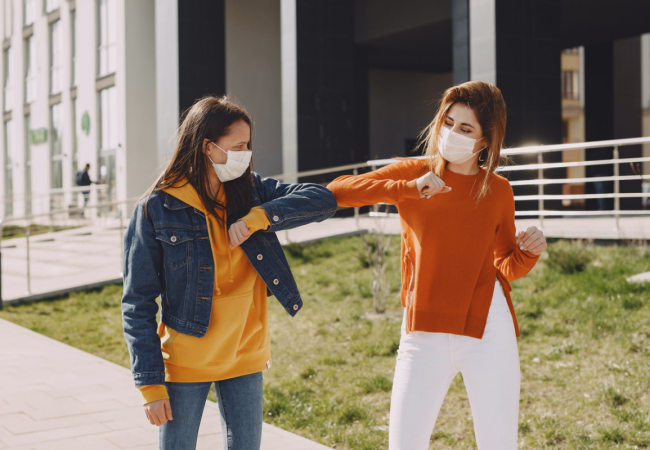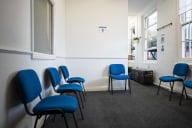You have /5 articles left.
Sign up for a free account or log in.

Pexels.com
Colleges should test students and employees for COVID-19 at least twice a week, with results available within 48 hours, says a new report from the American College Health Association.
The report was released at the same time a new study in Annals of Internal Medicine found that the combination of extensive social distancing and mandatory mask wearing prevents 87 percent of campus COVID-19 cases, and does so cost-effectively.
Layering routine testing with a one-day lag in results onto these twin policies is even better, preventing 96 percent of infections, the study says. But doing so would require low-cost tests to be economically attractive to most institutions.
The ACHA report noted that "students with COVID-19 are frequently asymptomatic. Preventing transmission by asymptomatic and presymptomatic individuals requires universal masking, physical distancing, swift identification through testing and contact tracing; and isolation and quarantine.
The health association noted that "Multilayered mitigation strategies with universal masking, physical distancing of 6 feet or more, and good hand hygiene accompanied by a coordinated public health strategy of robust testing, contact tracing, and expeditious isolation and quarantine processes are the most effective measures for decreasing the risk of transmission."
Whether colleges follow the recommendations of the association depends on a variety of factors, including cost.
Extensive social distancing with masks costs $170 per infection prevented compared with masks alone. Adding routine laboratory testing increases the cost per infection prevented at least $2,010.
Extensive social distancing is defined as putting 50 percent of smaller classes and all large classes online, as compared to minimal social distancing, such as simply canceling sports and other big social events.
Nonintervention, meanwhile, leads to infections among 75 percent of students and 16 percent of the faculty, according to the study. Closing the campus reduces student infections by 63 percent and faculty infections by 84 percent, with most student infections coming from other students living near campus.
Minimal social distancing, with self-screening or one-time laboratory screening at the beginning of the semester, reduces student infections 16 percent relative to doing nothing. Lab screening of asymptomatic students every three days, plus minimal social distancing, reduces student infections by about 78 percent and faculty infections by up to 61 percent, relative to minimal social distancing alone.
Wearing masks alone, without lab screening, reduces student and faculty infections by up to 56 percent and 66 percent, respectively, relative to minimal social distancing, and by 33 percent and 43 percent, respectively, relative to extensive social distancing.
These scenarios assume that students and faculty members are already screening themselves for possible COVID-19 symptoms and isolating when necessary. Among students who test positive, researchers found that designated spaces for isolation (think COVID-19 dorms) are even more effective in reducing possible transmission than residence-based isolation.
Researchers also assumed that all students who test positive remain COVID-19-free for the remainder of the semester. They did not factor into their costs survivors suffering from any long-term complications.
The purpose of the study, which was based on the pre-existing Clinical and Economic Analysis of COVID-19 interventions transmission model and other data, was to help colleges and universities navigate their way through the ongoing pandemic. The paper notes that there have been 320,000 cases and 80 COVID-19-related deaths at some 1,700 institutions already, and that colleges’ various mitigation strategies have “major implications for laboratory testing and hospital capacity in the towns and cities where colleges are located.”
“The tradeoffs of different strategies must be weighed,” wrote the researchers, who work at Brigham and Women's Hospital, Massachusetts General Hospital and Case Western Reserve University. “Although closing campus and offering fully remote education might reduce transmissions, doing so could reduce education quality, graduation rates, and revenue. Frequent laboratory testing may be costly and requires isolation strategies for those who test positive.”
The study model predicts infections among students and faculty members transmitted by students, professors and surrounding community members. Researchers focused on undergraduates for their “unique social profile" and proximity to campus.
Costs in the study include social distancing and other nonmedical interventions, testing and hospital-related expenses, and are measured over one semester.
Researchers described results for 5,000 students and 1,000 professors in a larger community of one million people.
Among a 5,000-student population, extensive social distancing and mask wearing reduced COVID-19 cases from 3,746 (with no mitigation) to 493. Layering regulatory laboratory testing of asymptomatic students every three days, the case load dropped further, to 151.
In general, colleges aren't testing undergrads more than twice per week, and many don't test twice a week.
Among 1,000 faculty members, these values were 164, 28 and 25 cases, respectively.
Costs ranged from about $400,000 for minimal social distancing to about $900,000 to $2.1 million for strategies involving laboratory testing, at $10 per test, depending on testing frequency.
“This next semester represents a critical time in the pandemic,” lead author Elena Losina, director of the Policy and Innovation eValuations in Orthopedic Treatments Center at Brigham and Women's Hospital, said in a statement. “While the vaccine rollout has begun, it is unlikely that most college students will be eligible for the vaccine until late in the spring semester.”
At the same time, she said, “our modeling shows that colleges and universities can put effective programs in place to mitigate infections. This analysis is designed to help individuals and institutions make decisions using a formal, data-driven approach.”
Co-author Kenneth Freedberg, professor of medicine at Harvard University, said that if college and universities “put less effort into social distancing and mask-wearing policies, they need to rely more on routine laboratory testing at higher cost to reduce the spread of COVID-19.”
If less costly tests were available, he added, “then routine testing would be feasible in more college settings.”









